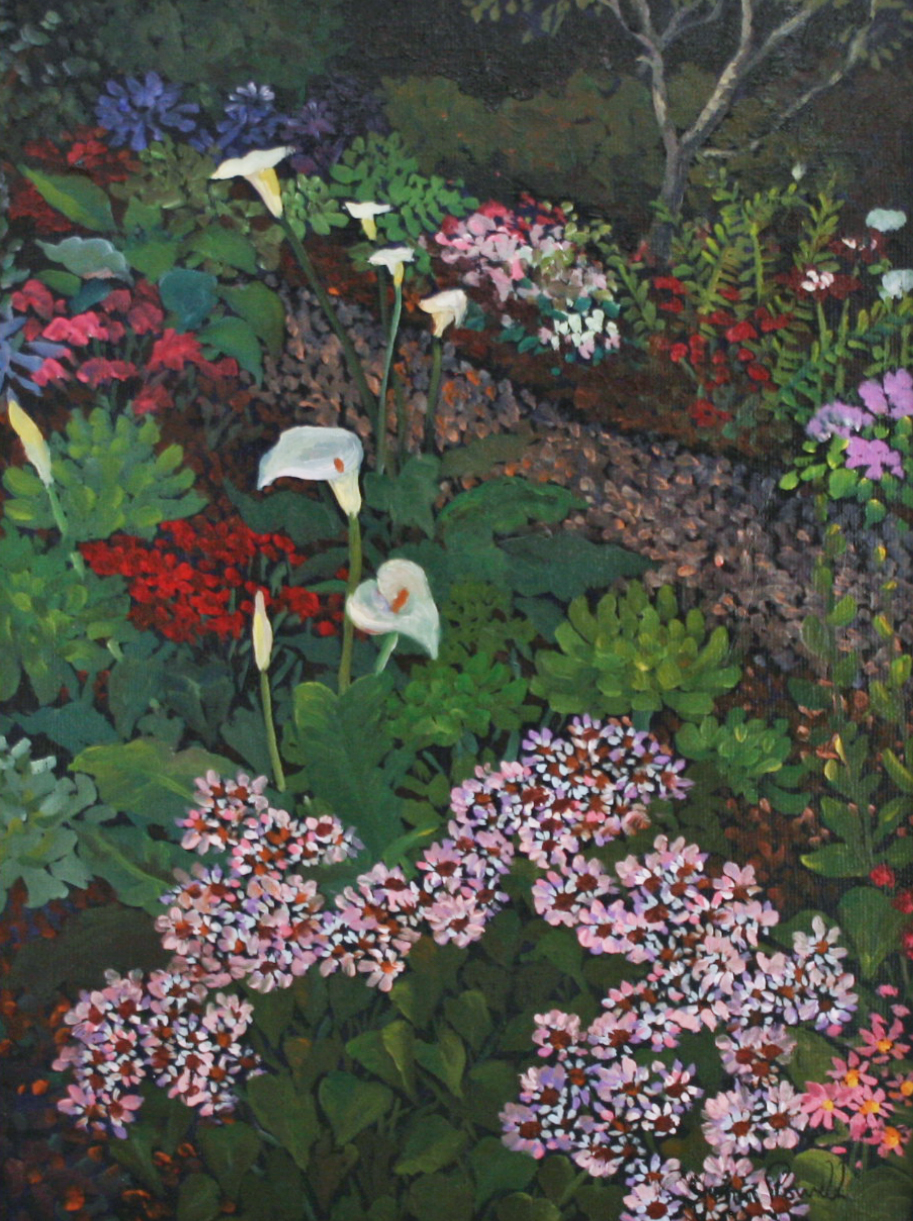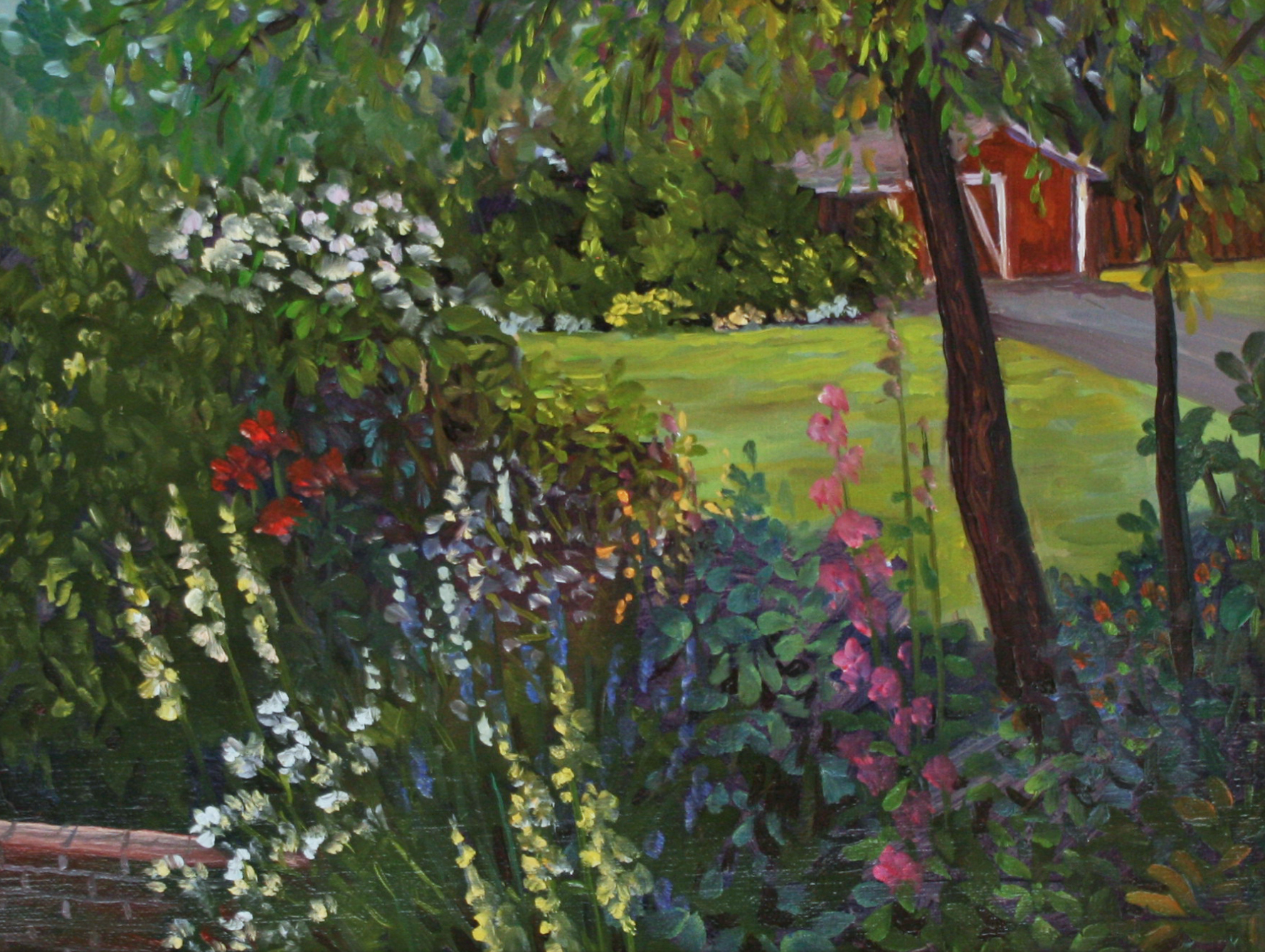When you examine John Powell's work closely, you discover a unique, self-taught approach which is unlike any other artist. Watching John at his easel, one can see that it is the minutia of detail that is a hallmark of his paintings. His brushstroke catches the light on a bird’s feather, a petal - every leaf is important to the balance and harmony of his composition. Layers of depth give intensity - a losing and finding of edges, a drama unfolds. With John’s ever-increasing popularity, there are many who attempt to imitate his work; however, they are unable to duplicate the energy of the mind that creates these sparkling, decorative conceptions.
As a young man, John Powell spent many hours with his father, a prominent artist in California. He began to frequent his studio, and such occasions proved to be an important step towards John’s career as an artist.
John recalls one weekend in particular when long hours were spent in the studio listening to his father and artist Will Foster discuss color. “I was on a bus going home to Hollywood. The evening was warm and the shadows strong. Suddenly it hit me – there they were all the colors my father and Will were talking about. The trees weren’t just green, they were blue and purple and orange. I think of that as my awakening.” This recollection of those early years is significant, as it is not merely the facility of the hand that makes the artist; it is the ability to see.
John enlisted in the Navy after graduating from high school. During this time, he spent two years in Japan. This environment was instrumental in John’s development, as he was inspired by the beauty of his surroundings. His drawings from this period reflect the Far Eastern influence and design elements that would mold his eventual style.
After four years in the Navy, John enrolled in the Mexico City College in Mexico City, which is known for its excellent art department. The influence of the primitive arts of Mexico made an indelible imprint, which would be forever expressed during his artistic career.
John made a serious effort to establish an art career on his return to Los Angeles in the 1950’s. During this period, leisure time was passed with other artists, including his closest friends, John Altoon and Ed Klienholz, at their well-known haunt, Barney’s Beanery in West Hollywood. For more than a decade, beginning in the early 60s, he worked as an antique dealer, traveling the world to source ancient artifacts for clients. While working as a dealer, he continued to paint on the side.
Today, John resides with his wife in Santa Ynez, California. His home and studio have the unmistakable feel of his creativity. A collection of wood carvings, weather vanes, ceramic pots, old model airplanes, exotic fabrics and unusual antiques delight the eye. The aesthetic gardens reflect his love of flowers and the magical drawings portray his never-ending humor.
John explains, “Each of my paintings, in its own way, is my vision of a garden in paradise. I try to paint with the thought that anyone is invited to come in and enjoy these visions.
My experiences with travel and the collecting of various antiques appear in every piece, creating situations based on reality, but mixed with my fantasies.” There is never a focal point to his canvas; the viewer is invited to enter at will.
When you examine his work closely, you discover a unique, self-taught approach which is unlike any other artist. Watching John at his easel, one can see that it is the minutia of detail that is a hallmark of his paintings. His brushstroke catches the light on a bird’s feather, a petal – every leaf is important to the balance and harmony of his composition. Layers of depth give intensity – a losing and finding of edges, a drama unfolds. With John’s ever-increasing popularity, there are many who attempt to imitate his work; however, they are unable to duplicate the energy of the mind that creates these sparkling, decorative conceptions.
For the fiftieth anniversary of the World Federation of the United Nations Associations (WFUNA), John Powell created the limited edition serigraph “A Plea for Peace.” This image is a part of the permanent collection of the Philatelic Museum at the Palais des Nations in Geneva, which includes works of art by Marc Chagall, Joan Miro, Norman Rockwell and Andy Warhol.



